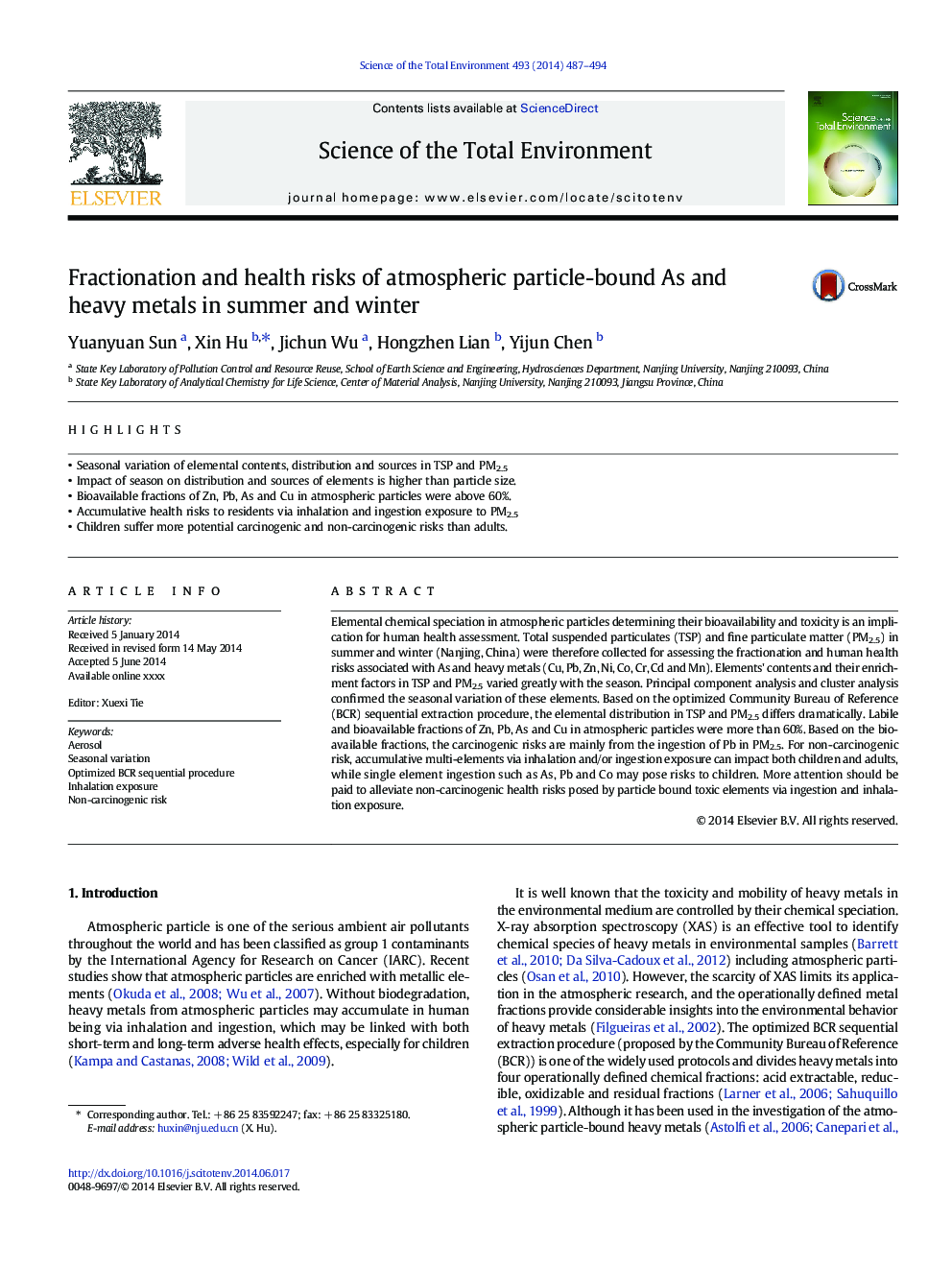| Article ID | Journal | Published Year | Pages | File Type |
|---|---|---|---|---|
| 6329715 | Science of The Total Environment | 2014 | 8 Pages |
Abstract
Elemental chemical speciation in atmospheric particles determining their bioavailability and toxicity is an implication for human health assessment. Total suspended particulates (TSP) and fine particulate matter (PM2.5) in summer and winter (Nanjing, China) were therefore collected for assessing the fractionation and human health risks associated with As and heavy metals (Cu, Pb, Zn, Ni, Co, Cr, Cd and Mn). Elements' contents and their enrichment factors in TSP and PM2.5 varied greatly with the season. Principal component analysis and cluster analysis confirmed the seasonal variation of these elements. Based on the optimized Community Bureau of Reference (BCR) sequential extraction procedure, the elemental distribution in TSP and PM2.5 differs dramatically. Labile and bioavailable fractions of Zn, Pb, As and Cu in atmospheric particles were more than 60%. Based on the bioavailable fractions, the carcinogenic risks are mainly from the ingestion of Pb in PM2.5. For non-carcinogenic risk, accumulative multi-elements via inhalation and/or ingestion exposure can impact both children and adults, while single element ingestion such as As, Pb and Co may pose risks to children. More attention should be paid to alleviate non-carcinogenic health risks posed by particle bound toxic elements via ingestion and inhalation exposure.
Related Topics
Life Sciences
Environmental Science
Environmental Chemistry
Authors
Yuanyuan Sun, Xin Hu, Jichun Wu, Hongzhen Lian, Yijun Chen,
